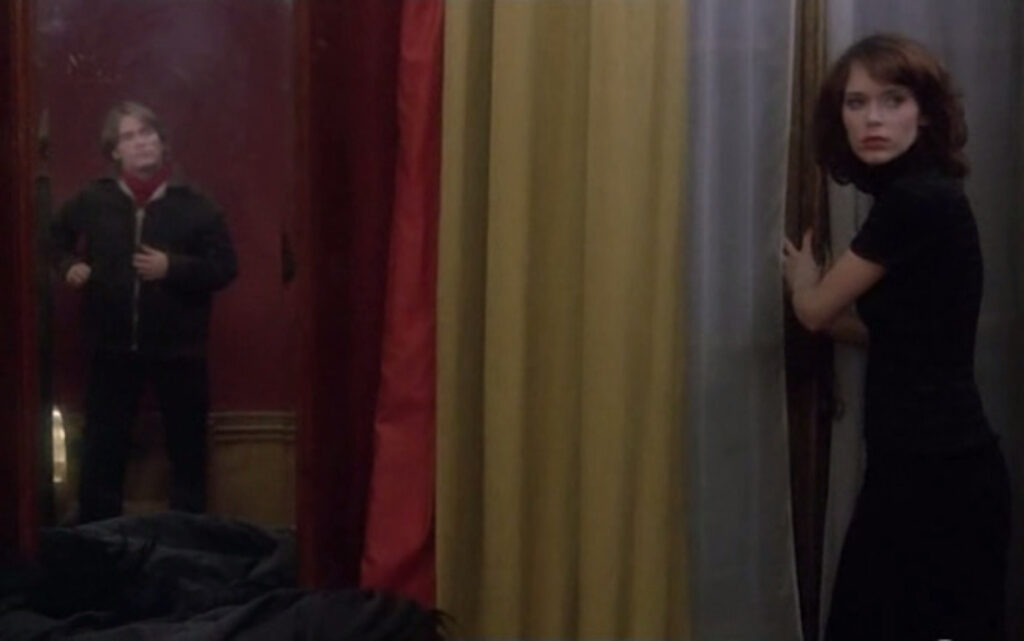
Walerian Borowczyk’s La marge (1976) unites Warhol superstar Joe Dallesandro with Emmanuelle star Sylvia Kristel. But this isn’t the typical Euro-erotica that these stars or this director is known for. In La Marge the spectacle of sex is executed as a desperate existential act. Borowczyk imbues the entire film with this uncanny sense of dread where the scenes of simulated sex merely give catharsis to the characters; a kind of dramatic punctuation.
La marge opens with a happily married Dallesandro living idyllically in the French countryside with his family. After a visit from his boss, Dallesandro is sent to Paris where baroque images of rolling hills and tender familial intimacies give way to a cool color palette and scenes of Dallesandro adrift in an urban labyrinth. Without wife and child Dallesandro becomes an itinerant object naively navigating a strange city. Borowczyk never troubles himself with showing Dallesandro at work, prioritizing instead the articulating the effects that the absence of family has upon the character.
Once Dallesandro meets Sylvia Kristel and pays her for sex, then the focus becomes work. Borowczyk doesn’t romanticize sex work, maintaining an objective distance aesthetically that highlights the mechanical nature of Kristel’s gestures and the practicality of her bargaining. The sex in this first encounter is all work, a job, devoid of any overt tantalization (even 10cc’s I Am Not In Love plays in the background). Each subsequent sex scene between the two stars, the client and the worker, gradually grows more passionate.
The instigator for this passion isn’t a romantic love or physical obsession like one would expect. The motivating factor is grief. The viewer learns something about a suicide from a letter Dallesandro receives but the details are unclear. Again Borowczyk imparts only the narrative details that he deems essential. And so it is grief that now propels Dallesandro through the streets of Paris, that sends him seeking a kind of solace in the arms of Kristel.
In their final sexual encounter Dallesandro ejaculates into Kristel’s mouth as Pink Floyd dominates the soundtrack entirely. As Roger Waters’ bass booms Borowczyk keeps the frame steady on Dallesandro’s face as it contorts, suggesting either pleasure or pain. The music shifts perfectly with Dallesandro’s orgasm, Kristel’s abrupt departure and Dallesandro’s subsequent pursuit. This sequence is a perfect synthesis of image and music.
From here the inevitable occurs. First it is disclosed that both Dallesandro’s wife and child are dead. He drives all night out of the city to a remote road where he shoots himself. Then Borowczyk cuts back to Sylvia Kristel where everything is literally business as usual. With this ending Borowczyk totally discards any of the audience’s notions that love and romance might have informed or motivated the bond between the Kristel and Dallesandro characters. The fact of the matter is far more simple than one is likely to originally suspect.
La marge is almost antithetical to the style Borowczyk was working in during the late seventies. The poetic realism in La marge negates the fantastique elements Borowczyk helped to pioneer. Here Borowczyk turns his cinema towards the internal rather than the external images of desire. It’s misleading that in some regions La marge was released as Emmanuelle 77 in an attempt to cash-in on Sylvia Kristel’s fame. La marge is one of Borowczyk’s greatest works, most certainly amongst his features, that I would love to see restored and with a proper release.
